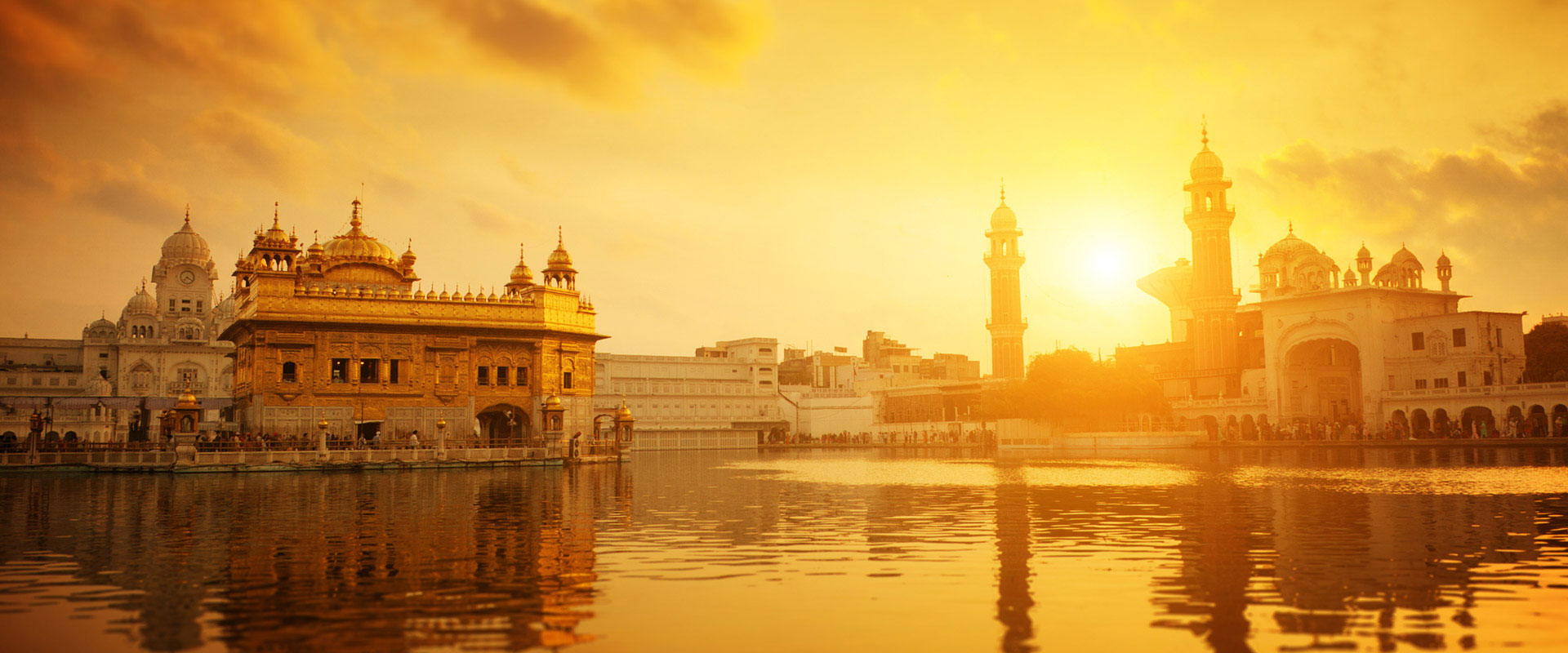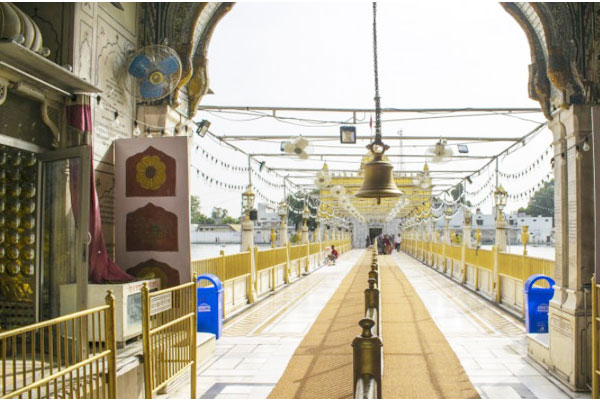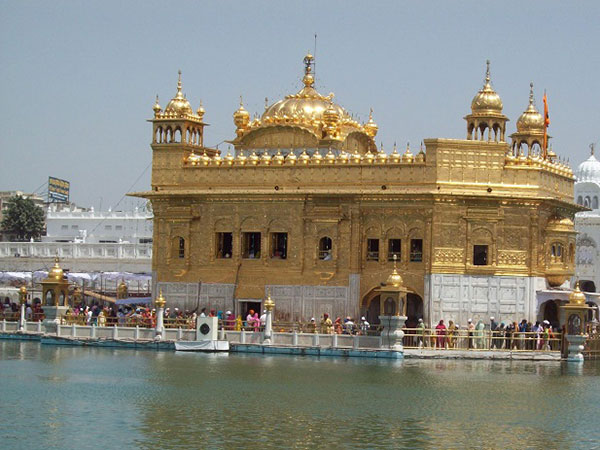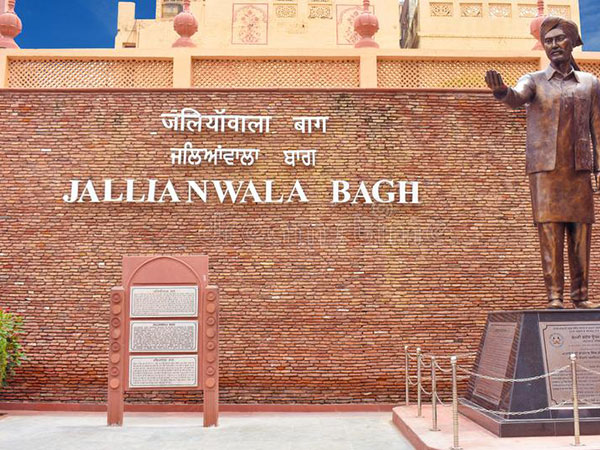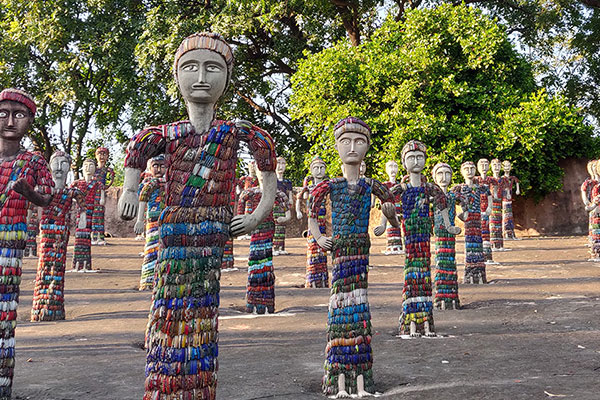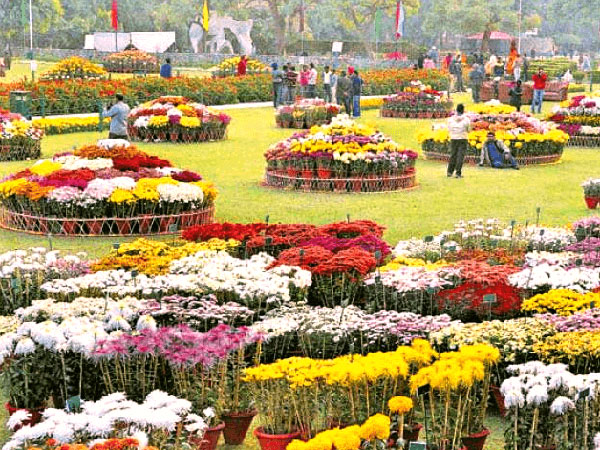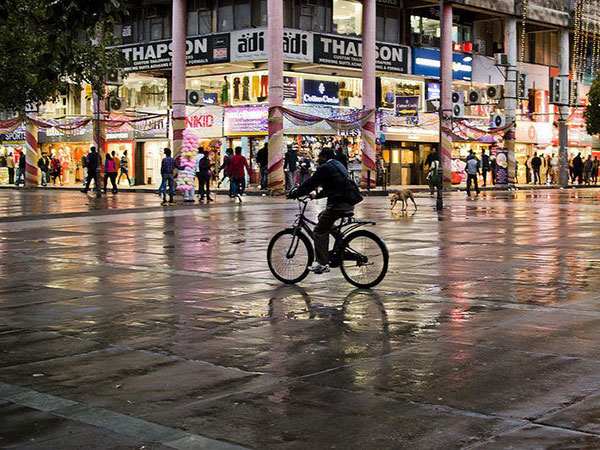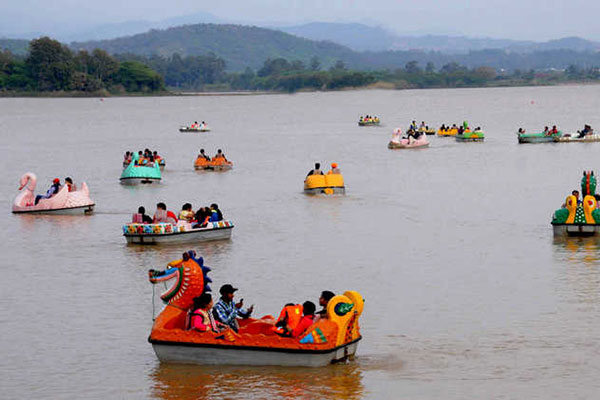Amritsar Chandigarh 2 Nights 3 Days
/ per person
(0 Reviews)
Amritsar is one of Punjab’s principal cities, dating back in history over 400 years. It is known more for the world famous Golden Temple, the seat of Sikh religion. Situated on the north-western border of India, the city is also gateway for the travelers on the overland route through Pakistan. The Wagah border, which is the check-post, is about 29 kms away. Amritsar literally means “the pool of nectar”, the name derived from a pool constructed at the sacred site in the 16th century, gifted by the Mughal Emperor Akbar to Guru Ramdas, the fourth preceptor of the Sikh faith.
Tour Itinerary
- Amritsar
- Golden Temple
- Durgiana Temple
- Chandigarh Rock Garden
- Rose Garden
- Sukhna Lake
- Drop Airport Delhi
-
Departure
Amritsar/Delhi -
Departure Time
Approximately 10:00 AM or 11:00 AM -
Return Time
Approximately 5:00 PM -
Dress Code
Casual and Comfortable -
Included
Airport TransferBreakfastDinner -
Not Included
5 Star AccommodationGallery TicketLunchPersonal Guide
Tour Plan
1
DAY 1: Amritsar Local side Seen & Local Market Visit
Pick up Amritsar Railway Station or airport Hotel After Fresh Move Local side Seen visit
Golden Temple Day View Amritsar is one of Punjab’s principal cities, dating back in history over 400 years. It is known more for the world famous Golden Temple, the seat of Sikh religion. Situated on the north-western border of India, the city is also gateway for the travelers on the overland route through Pakistan. The Wagah border, which is the check-post, is about 29 kms away. Amritsar literally means "the pool of nectar", the name derived from a pool constructed at the sacred site in the 16th century, gifted by the Mughal Emperor Akbar to Guru Ramdas, the fourth preceptor of the Sikh faith.
Jallianwala Bagh is a public garden in Amritsar in the Punjab state of India, and houses a memorial of national importance, established in 1951 by the Government of India, to commemorate the massacre by British occupying forces of peaceful celebrators including unarmed women and children, on the occasion of the Punjabi New Year on April 13, 1919 in the Jallianwala Bagh Massacre. Colonial British Raj sources identified 379 fatalities and estimated about 1100 wounded .Civil Surgeon Dr. Smith indicated that there were 1,526 casualties.
Durgiana Temple also known as Lakshmi Narayan Temple, Durga Tirath and Sitla Mandir, is a premier temple situated in the city of Amritsar, Punjab, India. Though a Hindu temple, its architecture is similar to the Golden Temple.] This temple derives its name from the Goddess Durga, the chief Goddess deified and worshipped here. Idols of Goddess Laksmi(goddess of wealth) and Vishnu (the protector of the world) are also deified here and worshipped
Evening Time Visit Wagah Border in Amritsar between Pakistan and India is the only road border between the two countries. It lies on the Grand Trunk Road between the cities of Amritsar, Punjab, India, and Lahore, Punjab, Pakistan. The border is located 22 km from Lahore and 28 km from Amritsar. Apart from its national significance it is visited with great patriotism and enthusiasm for the ceremony that happens every day before sunset. The highlight is lowering of the flags of the two countries simultaneously. The flags are folded and the ceremony ends with a gesture that involves a brusque handshake between soldiers from either side which is followed by the closing of the gates. The spectacle of the ceremony attracts many visitors from both sides of the border, as well as international tourists for its high energy and enthusiastic ceremonial practice. This checkpoint at Wagah Border in Amritsar draws plenty of global attention and affords a stage for Indian and Pakistani paramilitary forces to strut their tough stuff. Each sunset, there are noisy partisan crowds cheering on the BSF and the Rangers as they present arms with much stage managed, in-your-face ceremony, each side trying to outdo the other. Golden Temple Night View - Golden temple at night is certainly a treat for the eyes & soul. The peaceful temple, which represents Amritsar for travellers, is highly revered by the Sikh community. The influx of devotees starts early morning and continues till 10 pm. If you have a day for Golden Temple, you should definitely make it a point to visit at night. On certain occasions, when there is a birth anniversary of a Sikh Guru or an important event for Sikh community, Golden temple at night transmutes into a marvel beyond the golden lights and shades of it on the holy lake. IL luminous firecrackers cover the sky above the shimmering golden temple at night and coerce the stars to disappear
Golden Temple Day View Amritsar is one of Punjab’s principal cities, dating back in history over 400 years. It is known more for the world famous Golden Temple, the seat of Sikh religion. Situated on the north-western border of India, the city is also gateway for the travelers on the overland route through Pakistan. The Wagah border, which is the check-post, is about 29 kms away. Amritsar literally means "the pool of nectar", the name derived from a pool constructed at the sacred site in the 16th century, gifted by the Mughal Emperor Akbar to Guru Ramdas, the fourth preceptor of the Sikh faith.
Jallianwala Bagh is a public garden in Amritsar in the Punjab state of India, and houses a memorial of national importance, established in 1951 by the Government of India, to commemorate the massacre by British occupying forces of peaceful celebrators including unarmed women and children, on the occasion of the Punjabi New Year on April 13, 1919 in the Jallianwala Bagh Massacre. Colonial British Raj sources identified 379 fatalities and estimated about 1100 wounded .Civil Surgeon Dr. Smith indicated that there were 1,526 casualties.
Durgiana Temple also known as Lakshmi Narayan Temple, Durga Tirath and Sitla Mandir, is a premier temple situated in the city of Amritsar, Punjab, India. Though a Hindu temple, its architecture is similar to the Golden Temple.] This temple derives its name from the Goddess Durga, the chief Goddess deified and worshipped here. Idols of Goddess Laksmi(goddess of wealth) and Vishnu (the protector of the world) are also deified here and worshipped
Evening Time Visit Wagah Border in Amritsar between Pakistan and India is the only road border between the two countries. It lies on the Grand Trunk Road between the cities of Amritsar, Punjab, India, and Lahore, Punjab, Pakistan. The border is located 22 km from Lahore and 28 km from Amritsar. Apart from its national significance it is visited with great patriotism and enthusiasm for the ceremony that happens every day before sunset. The highlight is lowering of the flags of the two countries simultaneously. The flags are folded and the ceremony ends with a gesture that involves a brusque handshake between soldiers from either side which is followed by the closing of the gates. The spectacle of the ceremony attracts many visitors from both sides of the border, as well as international tourists for its high energy and enthusiastic ceremonial practice. This checkpoint at Wagah Border in Amritsar draws plenty of global attention and affords a stage for Indian and Pakistani paramilitary forces to strut their tough stuff. Each sunset, there are noisy partisan crowds cheering on the BSF and the Rangers as they present arms with much stage managed, in-your-face ceremony, each side trying to outdo the other. Golden Temple Night View - Golden temple at night is certainly a treat for the eyes & soul. The peaceful temple, which represents Amritsar for travellers, is highly revered by the Sikh community. The influx of devotees starts early morning and continues till 10 pm. If you have a day for Golden Temple, you should definitely make it a point to visit at night. On certain occasions, when there is a birth anniversary of a Sikh Guru or an important event for Sikh community, Golden temple at night transmutes into a marvel beyond the golden lights and shades of it on the holy lake. IL luminous firecrackers cover the sky above the shimmering golden temple at night and coerce the stars to disappear
- Meal : Dinner
- Night Amritsar
2
DAY 2: Amritsar to Chandigarh Local Market Visit
Morning after breakfast Check out Hotel Move See runWay side Seen Chandigarh Local Visit
A rose garden or rosarium is a garden or park, often open to the public, used to present and grow various types of garden roses or rose species. Designs vary tremendously and roses may be displayed alongside other plants or grouped by individual variety, color or class in rose Bed.
Rock Garden of Chandigarh is a sculpture garden in Chandigarh, India, also known as Nek Chand's Rock Garden after its founder Nek Chand, a government official who started the garden secretly in his spare time in 1957. Today it is spread over an area of 40 acres (161874.25 m²). It is completely built of industrial and home waste and thrown-away items. Iconic Rock Garden creator Late Nek Chand, The 90-year-old Padma Shri awardee has millions of fans across the globe. The garden is most famous for its sculptures made from recycled ceramic Waterfall and path at Rock Garden, Chandigarh It is near Sukhna Lake
17 Sector Market Chandigarh is full of young and energetic people. This city loves to socialize, and its local markets seem to be the perfect place for it. One such landmark is the Sector 17 market in Chandigarh. It has the finest range of delightful restaurants as well as international brands and stores that will leave you mesmerized. The market has several brand stores along a number of eating joints. You can buy a range of things including Punjabi Jootis, wedding gowns, denim, office wear, shoes and a lot more from this open mall-like market. From kidswear to fashion apparels, you find everything in one space here.
A rose garden or rosarium is a garden or park, often open to the public, used to present and grow various types of garden roses or rose species. Designs vary tremendously and roses may be displayed alongside other plants or grouped by individual variety, color or class in rose Bed.
Rock Garden of Chandigarh is a sculpture garden in Chandigarh, India, also known as Nek Chand's Rock Garden after its founder Nek Chand, a government official who started the garden secretly in his spare time in 1957. Today it is spread over an area of 40 acres (161874.25 m²). It is completely built of industrial and home waste and thrown-away items. Iconic Rock Garden creator Late Nek Chand, The 90-year-old Padma Shri awardee has millions of fans across the globe. The garden is most famous for its sculptures made from recycled ceramic Waterfall and path at Rock Garden, Chandigarh It is near Sukhna Lake
17 Sector Market Chandigarh is full of young and energetic people. This city loves to socialize, and its local markets seem to be the perfect place for it. One such landmark is the Sector 17 market in Chandigarh. It has the finest range of delightful restaurants as well as international brands and stores that will leave you mesmerized. The market has several brand stores along a number of eating joints. You can buy a range of things including Punjabi Jootis, wedding gowns, denim, office wear, shoes and a lot more from this open mall-like market. From kidswear to fashion apparels, you find everything in one space here.
- Meal : Breakfast & Dinner
- Night Chandigarh
3
DAY 3: Chandigarh to Drop Delhi
Morning After Breakfast Check out Hotel Move See Run way Side Seen sukhna Lekh
Sukhna Lake in Chandigarh, India, is a reservoir at the foothills of the Himalayas, the Shivalik hills. This 3 km² rainfed lake was created in 1958 by damming the Sukhna Choe, a seasonal stream coming down from the Shivalik Hills. Originally the seasonal flow entered the lake directly causing heavy siltation. To check the inflow of silt, 25.42 km² of land was acquired in the catchment area and put under vegetation. In 1974, the Choe was diverted and made to bypass the lake completely, the lake being fed by three siltation pots, minimizing the entry of silt into the lake itself……………Drop Delhi Railway station
Sukhna Lake in Chandigarh, India, is a reservoir at the foothills of the Himalayas, the Shivalik hills. This 3 km² rainfed lake was created in 1958 by damming the Sukhna Choe, a seasonal stream coming down from the Shivalik Hills. Originally the seasonal flow entered the lake directly causing heavy siltation. To check the inflow of silt, 25.42 km² of land was acquired in the catchment area and put under vegetation. In 1974, the Choe was diverted and made to bypass the lake completely, the lake being fed by three siltation pots, minimizing the entry of silt into the lake itself……………Drop Delhi Railway station
- Meal : Breakfast


